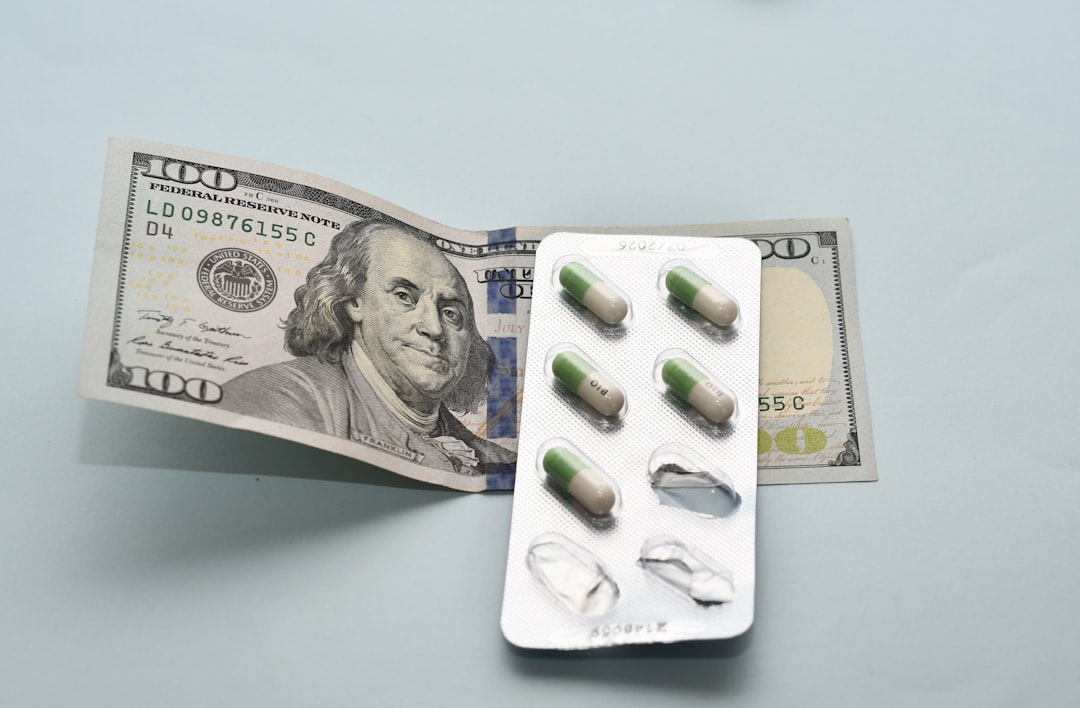The United States is often characterized by its advanced medical technology and high-quality healthcare services. However, this comes at a steep price, as the nation consistently ranks among the highest in healthcare spending globally. The complexity of the U.S. healthcare system, combined with various economic and social factors, contributes to exorbitant costs that can be burdensome for individuals and families alike. Understanding the intricacies of these high healthcare costs is essential for anyone seeking to navigate the system or advocate for reform. Healthcare costs in the U.S. are not merely a reflection of the quality of care provided; they are influenced by a myriad of factors, including administrative inefficiencies, the role of pharmaceutical companies, and the structure of insurance systems. As healthcare expenses continue to rise, many Americans find themselves grappling with high premiums, deductibles, and out-of-pocket expenses. This article aims to explore the various dimensions of healthcare costs in the U.S., comparing them with other countries, examining contributing factors, and discussing potential solutions to alleviate this pressing issue.
When comparing healthcare costs across different nations, the United States stands out for its exceptionally high expenditure per capita. According to data from the Organization for Economic Cooperation and Development (OECD), the U.S. spends nearly twice as much on healthcare as other developed countries, such as Canada, Germany, and the United Kingdom.
While these countries also face challenges in their healthcare systems, they manage to provide comprehensive care at a fraction of the cost seen in the U.S. One significant difference lies in the structure of healthcare systems. Many countries operate under a single-payer or universal healthcare model, which allows for greater negotiation power over prices and streamlined administrative processes.
In contrast, the U.S. system is fragmented, with multiple private insurers and government programs coexisting, leading to inefficiencies and higher administrative costs. This disparity raises questions about the sustainability of the U.S.
model and whether it can be reformed to achieve more equitable and affordable healthcare for all citizens.
Key Takeaways
- The high healthcare costs in the U.S. are a complex issue with multiple contributing factors.
- Compared to other countries, the U.S. spends significantly more on healthcare without achieving better outcomes.
- Factors contributing to high healthcare costs include administrative expenses, high drug prices, and overutilization of medical services.
- Pharmaceutical companies play a significant role in driving up healthcare costs through high drug prices and aggressive marketing tactics.
- Insurance companies also impact healthcare costs through complex billing processes and high administrative expenses.
Several factors contribute to the high costs of healthcare in the United States, each interwoven with the others in a complex web of economic realities. One primary driver is the high cost of medical services and procedures. Hospitals and healthcare providers often charge significantly more for services than their counterparts in other countries.
This can be attributed to a variety of reasons, including higher salaries for medical professionals, expensive medical equipment, and a focus on advanced technology that may not always translate into better patient outcomes. Another contributing factor is the prevalence of chronic diseases in the U.S., which places an additional financial burden on the healthcare system. Conditions such as diabetes, heart disease, and obesity require ongoing treatment and management, leading to increased demand for medical services.
The lifestyle choices prevalent in American society, coupled with limited access to preventive care, exacerbate this issue. As a result, healthcare costs continue to escalate as more individuals require extensive medical attention over time.
The Role of Pharmaceutical Companies: How Drug Prices Impact Healthcare Costs
Pharmaceutical companies play a pivotal role in shaping healthcare costs in the United States. The prices of prescription medications in the U.S. are often significantly higher than those in other countries due to a lack of price regulation and negotiation power.
This has led to a situation where many Americans struggle to afford necessary medications, resulting in adverse health outcomes for those who cannot pay for their prescriptions. Moreover, aggressive marketing strategies employed by pharmaceutical companies contribute to rising drug prices. The promotion of new medications often emphasizes their benefits while downplaying potential side effects or alternative treatments that may be more cost-effective.
This marketing approach can lead to increased demand for expensive drugs that may not necessarily provide superior results compared to cheaper options. As a result, patients and healthcare providers may feel pressured to choose higher-priced medications, further inflating overall healthcare costs.
The Influence of Insurance Companies: How Does the Insurance System Affect Healthcare Costs?

Insurance companies significantly influence healthcare costs through their policies and practices. The complexity of insurance plans can create confusion for consumers, leading to unexpected out-of-pocket expenses that can deter individuals from seeking necessary care. High deductibles and copayments often force patients to weigh their health needs against financial constraints, resulting in delayed or foregone treatment.
Additionally, insurance companies negotiate prices with healthcare providers but often do so in ways that do not necessarily benefit consumers. These negotiations can lead to disparities in pricing based on insurance coverage, leaving uninsured individuals or those with high-deductible plans facing exorbitant bills for services that insured patients may receive at a fraction of the cost. This inequity highlights a fundamental flaw in the U.S.
healthcare system, where access to affordable care is often contingent upon one’s insurance status.
Government Policies and Regulations: How Do They Impact Healthcare Costs?
The Unintended Consequences of Regulatory Requirements
Regulatory requirements can lead to increased administrative burdens for healthcare providers, driving up operational costs that are ultimately passed on to patients. This can create a significant financial burden on individuals and families, making it difficult for them to access the care they need.
The Challenges of Government Healthcare Programs
Government programs such as Medicare and Medicaid provide essential coverage for millions of Americans, but they also face funding constraints that can limit access to care or lead to lower reimbursement rates for providers. This can create a cycle where providers increase prices for privately insured patients to compensate for losses incurred from government programs, further exacerbating disparities in healthcare costs across different populations.
The Ripple Effect of Healthcare Costs
The impact of government policies and regulations on healthcare costs can have far-reaching consequences. As providers increase prices to compensate for losses, it can lead to a ripple effect, driving up costs for everyone involved. This can make it even more challenging for individuals and families to access the care they need, perpetuating a cycle of inequality in healthcare.
Administrative costs represent a significant portion of overall healthcare spending in the United States, often cited as one of the key factors driving up prices. The complexity of navigating multiple insurance plans and billing processes creates an environment ripe for inefficiency. According to various studies, administrative expenses account for nearly 25% of total healthcare spending in the U.S., far exceeding that of other developed nations.
This administrative burden manifests itself in various ways, from billing errors to excessive paperwork required for insurance claims. Healthcare providers often need dedicated staff to manage these processes, diverting resources away from patient care. As a result, patients may experience longer wait times for appointments or face challenges accessing timely treatment due to administrative delays.
Streamlining administrative processes could lead to significant cost savings and improved patient experiences within the healthcare system.
Addressing high healthcare costs in the United States requires a multifaceted approach that considers various stakeholders within the system. One potential solution is implementing price transparency measures that allow consumers to understand the costs associated with different medical services and procedures before receiving care. By empowering patients with information about pricing, they can make more informed decisions about their healthcare options.
Additionally, exploring alternative payment models could help reduce overall spending while maintaining quality care. For instance, value-based care models incentivize providers to focus on patient outcomes rather than volume of services rendered. This shift could encourage preventive care measures and reduce reliance on costly interventions down the line.
Furthermore, policymakers could consider regulating pharmaceutical prices or allowing Medicare to negotiate drug prices directly with manufacturers. Such measures could alleviate some financial burdens on consumers while ensuring access to necessary medications. In conclusion, lowering healthcare costs in the United States is a complex challenge that requires collaboration among government entities, insurance companies, pharmaceutical manufacturers, and healthcare providers.
By addressing systemic inefficiencies and prioritizing patient-centered care, it is possible to create a more equitable and sustainable healthcare system that serves all Americans effectively.
FAQs
What factors contribute to the high healthcare costs in the United States?
The high healthcare costs in the United States can be attributed to several factors, including administrative costs, high prices for medical services and prescription drugs, a lack of price transparency, and a higher prevalence of chronic diseases.
How do administrative costs contribute to the high healthcare costs in the United States?
The complex and fragmented nature of the U.S. healthcare system leads to high administrative costs, including billing, insurance, and regulatory compliance. These costs are significantly higher than in other countries with universal healthcare systems.
Why are medical services and prescription drugs more expensive in the United States compared to other countries?
The lack of price regulation and negotiation in the U.S. healthcare system allows for higher prices for medical services and prescription drugs. Additionally, pharmaceutical companies often charge higher prices for drugs in the U.S. compared to other countries.
How does the lack of price transparency impact healthcare costs in the United States?
The lack of price transparency in the U.S. healthcare system makes it difficult for consumers to compare prices for medical services and make informed decisions. This lack of transparency contributes to higher healthcare costs for Americans.
What role do chronic diseases play in driving up healthcare costs in the United States?
The higher prevalence of chronic diseases, such as diabetes and heart disease, in the United States leads to increased healthcare utilization and costs. Managing and treating chronic diseases accounts for a significant portion of healthcare spending in the U.S.













